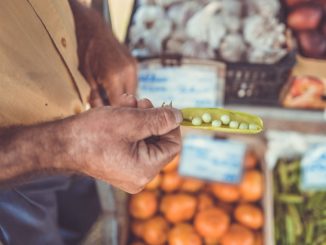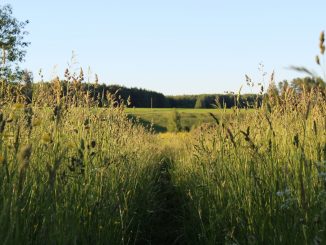
Next week, all eyes are on two key votes which will steer the future direction of the EU’s plans to loosen the rules governing new GMOs (aka new genetic technologies, or NGTs). Meanwhile, the European Commission finally put forward a slimmed down version of its animal welfare ‘package’ and lawmakers decided to exempt cattle from its plans to slash industrial emissions. Natasha Foote brings you up to speed in the latest goings on and the fun to come in Brussels.
New ge(NO)mic techniques
Next week, all eyes will be on two key votes on the next steps for the EU’s plan to loosen the rules on the use of genetic editing technologies, (new GMOs or NGTs) with lawmakers hashing out their positions on the file.
Over in the Council, the Spanish Presidency is aiming to seal the deal on a general approach in the next meeting of EU ministers – the text of which can be found here – set for Monday (11 December).
Read/download Latest NGT proposal (7th December)
The proposed text would exempt certain genetically modified plants (so-called ‘category 1 new genomic technique plants’) from the requirements of the EU’s GMO legislation.
But, according to sources, it will be touch and go whether there is enough support to rally a general position, with at least 10 member states “explicitly or implicitly” speaking out against the general approach, according to multiple sources close to the matter. These include Austria, Cyprus, Croatia, Hungary, Malta, Romania, Slovakia, Slovenia, Poland and Romania. Meanwhile, the majority of those in favour of the text have also stated they can not make further concessions to opponents.
However, as the vote must pass by a qualified majority, meaning a combination of 55% of member states vote in favour (or against) – in practice, 15 out of 27 – as well as member states representing at least 65% of the total EU population.
This means the vote may hinge on EU juggernaut Germany – and it is highly likely that it will choose to abstain, according to sources, given a divide between the country’s green-led agriculture ministry and its liberal research and science ministry.
Germany’s abstention would mean that the general approach will not pass on Monday, if all other member states opposed retain their positions, sources say. “If no member states flips over the weekend (which is unlikely) it won’t [pass],” a source said, adding that this depends on “a big member state abstaining”. As of going to press, a qualified majority looks unlikely, though some of those states considered to be “implicitly opposing” are worth keeping a close eye on over the weekend and into Monday morning.
No general agreement by qualified majority would stall the legislation as the EU Parliament elections are fast approaching.
Meanwhile, over in the European Parliament, the agriculture committee is also simultaneously set to vote on its opinion on the matter on Monday. While the committee is not the lead on the file, it does share competence on several key areas of the file, including on the status of category 1 NGT plants.
In related news, Commission President Ursula Von der Leyen announced this week that the EU executive plans to put forward an initiative on EU biotech and biomanufacturing in the spring of next year in efforts to boost a “crucial industrial sector in the midst of the global technology race”.
Animal welfare proposals falls flat
The European Commission presented its long-awaited proposal on the protection of animals during transport this week.
The proposal, presented 6 December, is one of the promised four that were originally supposed to make up the EU’s overhaul of the animal welfare legislation, as set out in the EU’s flagship food policy, the Farm to Fork strategy.
However, with EU elections looming and amid a concerted pushback from the right of the Parliament, the proposal has ended up being the only one left on the Commission’s menu still due to be published before the end of its mandate – and stakeholders are unimpressed at its weak offering.
Among the main points of contention is the failure to ban the export of live animals to non-EU countries – a key demand of animal welfare organisations.
The proposal instead opts to double down on reduced journey times and on space allowances. The new rules propose a maximum journey time of nine hours for animals meant for slaughter. Currently, there is no EU-set limit for how long the journey to a slaughterhouse can last.
For other live animal transports, the Commission proposes a maximum journey time of two times 21 hours, with 24 hours of rest in between, during which animals must be fed and given water.
However, these maximum journey times do not include sea transport, meaning that, on sea vessels, animals can be transported for longer.
For the Green’s Thomas Waitz, the proposal is a “step forward” but “lacks ambition regarding maximum transport times for ship transports, rules on extreme temperatures and more precise regulations on exports to third countries”.
The slimmed down version of the animal welfare package presented also included a proposal on new rules on the welfare and traceability of dogs and cats, which will establish, for the first time, uniform EU standards for the breeding, housing and handling of dogs and cats in breeding establishments and pet shops as well as shelters.
The two proposals are a far cry from the comprehensive overhaul of all EU animal welfare legislation promised as part of its Farm to Fork Strategy – but Executive Vice President Maroš Šefčovič maintains that “work is ongoing” on omitted aspects.
However, as there are no plans to make further proposals on animal welfare before next June’s EU election, it will be up to the next Commission to decide whether further initiatives should be tabled.
Fur farming
The Commission also responded this week to a European Citizens’ Initiative ‘Fur Free Europe’, in which more than 1.5 million citizens called on the EU to ban fur farming and the placement of farmed fur products on the market.
Despite the staunch support for the move, the Commission decided not to take action on the matter at this time, instead tasking the EU Food Safety Authority EFSA with “a scientific opinion on the welfare of animals farmed for fur”.
A decision on legislative action is then set to be taken on the basis of this opinion, but this is not expected to be finalised by March 2025.
Cattle farms excluded from EU’s industrial emissions plan
Cattle farms were excluded from new rules to cut harmful industrial emissions in a deal struck by the European Parliament and the Council at the end of November, bringing the Commission’s ambition to set emission limits for large-scale cattle farms to a dead end.
The proposed overhaul of the Industrial Emissions Directive (IED), unveiled by the EU executive in April 2022, aims to reduce harmful emissions coming from industrial installations. The Commission’s proposal was to expand its scope to include some of the largest livestock farms in the EU.
Concretely, lawmakers agreed to define “industrial” farms as those with more than 350 livestock units (LSU) for pigs, 300 adult livestock units (LUA) for poultry, and 280 for broilers. The Commission aimed for a more ambitious 150 LSU for all livestock – including cattle.
It is interesting to note that this was one of the somewhat unusual instances where the European Parliament showed less ambition (compared to the Commission text) than the Council.
While ministers were pushing for cows inclusion, albeit with a much larger threshold than that proposed by the Commission, it was the strong push from the Parliament that saw cattle excluded entirely.
While EU’s farmers association COPA-COGECA welcomed the move away from the Commission’s “out of touch” proposal, the farmers association lamented the consequences for poultry and pig farms.
However, green campaign groups lambasted the fact that the deal “maintains protection for the polluting status quo”.
“This is a bitter example of how EU decision-makers are disconnected from public interests and unwilling to translate the EU Green Deal into clear rules,” said EEB’s policy officer Christian Schaible, while campaign group Four Paws called it “another opportunity to adapt the animal farming industry for the future is lost”.
More
Leak – No Live Export Ban to non-EU Countries in Animal Welfare Overhaul
Seeds of Europe – Centering Small Producers’ Voices in Seed Law Reform
Pesticides Proposal Rejected in Plenary, Next Steps a SUR-prise
Commission to Renew Glyphosate for 10 years after Member States Fail to Reach Qualified Majority





